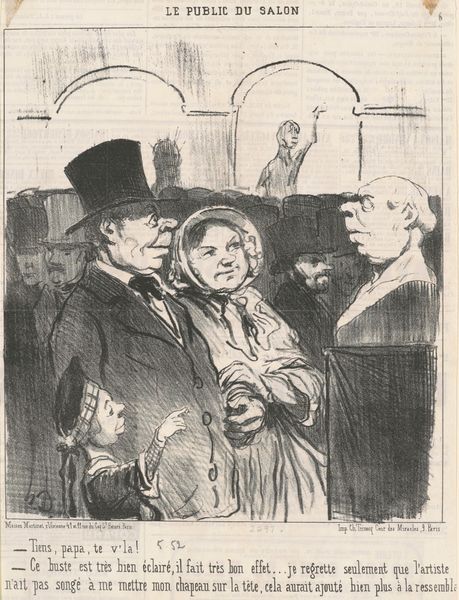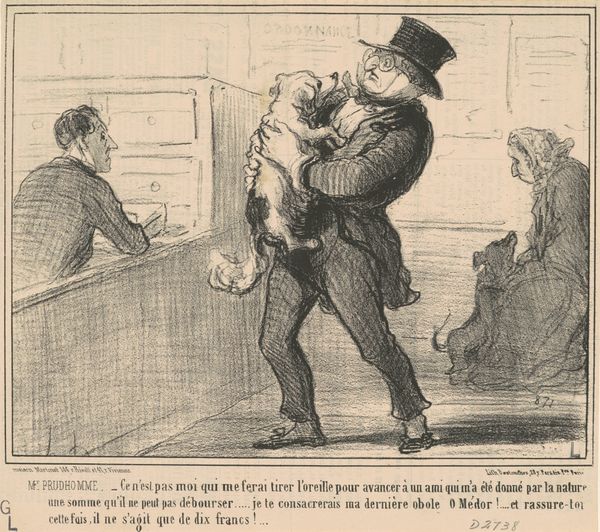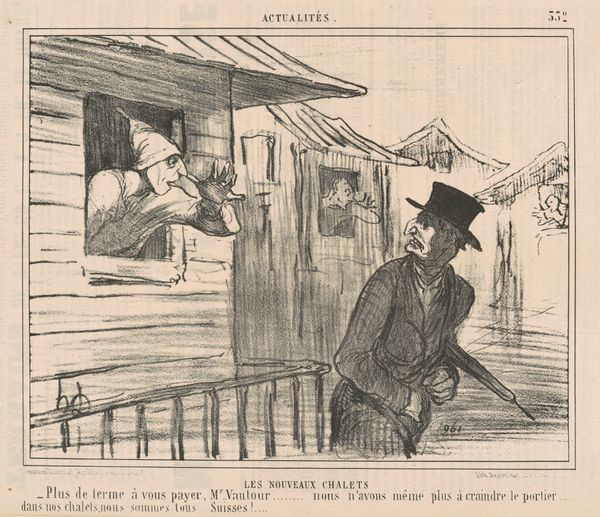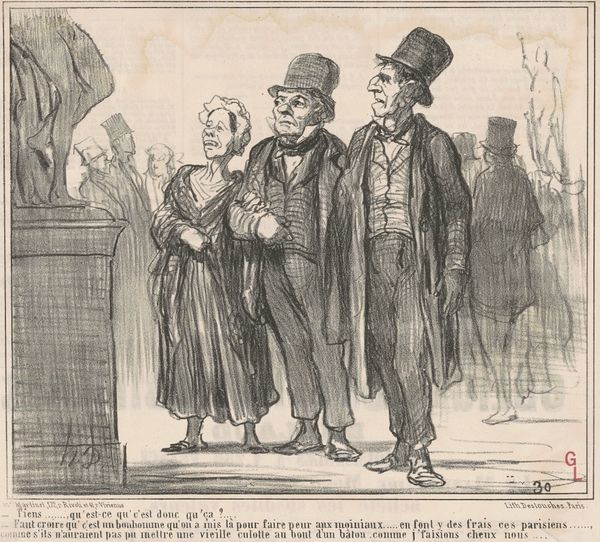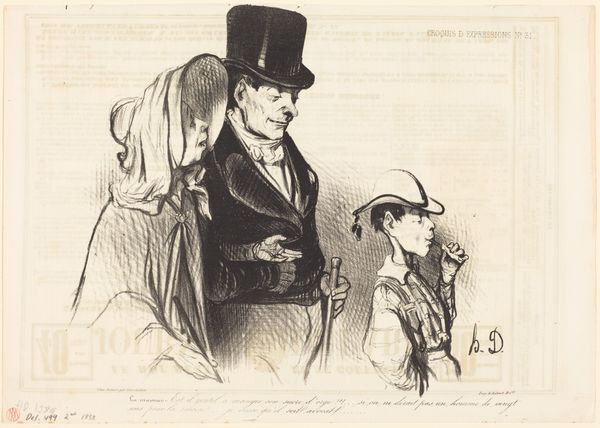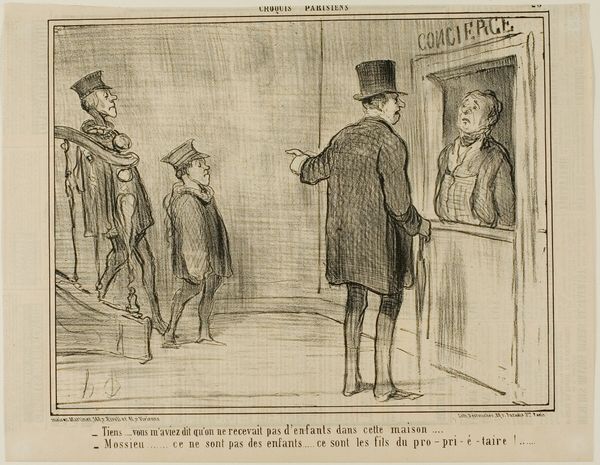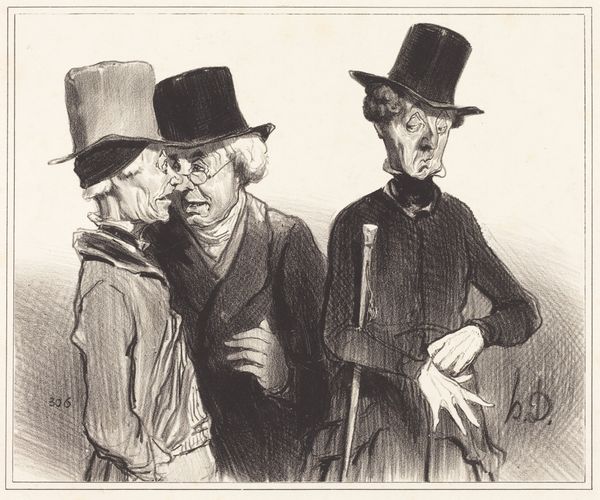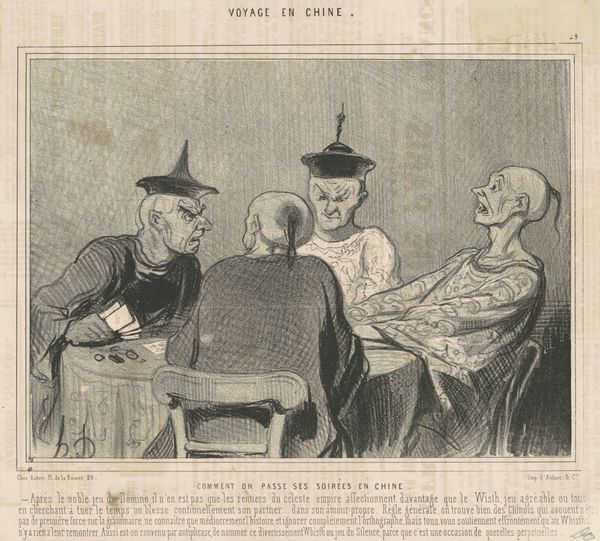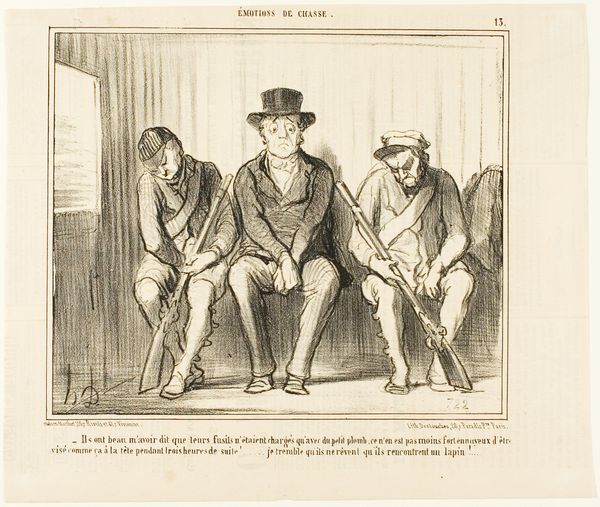
lithograph, print
#
lithograph
# print
#
caricature
#
romanticism
#
genre-painting
Copyright: National Gallery of Art: CC0 1.0
Curator: This lithograph, “Il me semble que nous allons dérailler…” by Honoré Daumier from around the 19th century, immediately speaks to the anxiety of modern transportation, specifically railways. The stark contrasts and caricatured figures reveal so much about the anxieties and social realities of the time. It really brings into focus questions surrounding class, mobility, and the rapidly changing industrial landscape of 19th century France. Editor: Absolutely, the expressions alone are captivating! The fear on the woman’s face is palpable. What's striking is the level of detail achieved with lithography. Given the historical context, what can we understand about Daumier's material choices and how that adds to the art's message? Curator: Excellent question. The choice of lithography, a relatively inexpensive and reproducible medium, is crucial. It allowed Daumier to disseminate his social critiques to a broad audience, moving art away from elite consumption and into the realm of popular culture. The cheap, mass-produced nature of the print challenges the notion of the "unique" art object and throws into question what makes art valuable. Editor: So, the medium itself democratizes the message? By depicting this social commentary through widely accessible prints? Curator: Exactly. Consider the labor involved: Daumier, the printer, and the distributors all participated in this act of cultural production. Each stage affected the availability, price, and even the appearance of the final product, which consequently created or hindered different audience interpretations of its value. Editor: I hadn’t considered the labor aspect. It sheds light on how everyday citizens experienced the artwork as more than just a picture. How fascinating that Daumier not only depicted societal concerns, but also engaged with the material conditions of art-making itself. Curator: It's through exploring these interconnected processes of making, distributing, and consuming art that we arrive at a fuller understanding of its power and meaning. Hopefully, that provides more to think about!
Comments
No comments
Be the first to comment and join the conversation on the ultimate creative platform.

